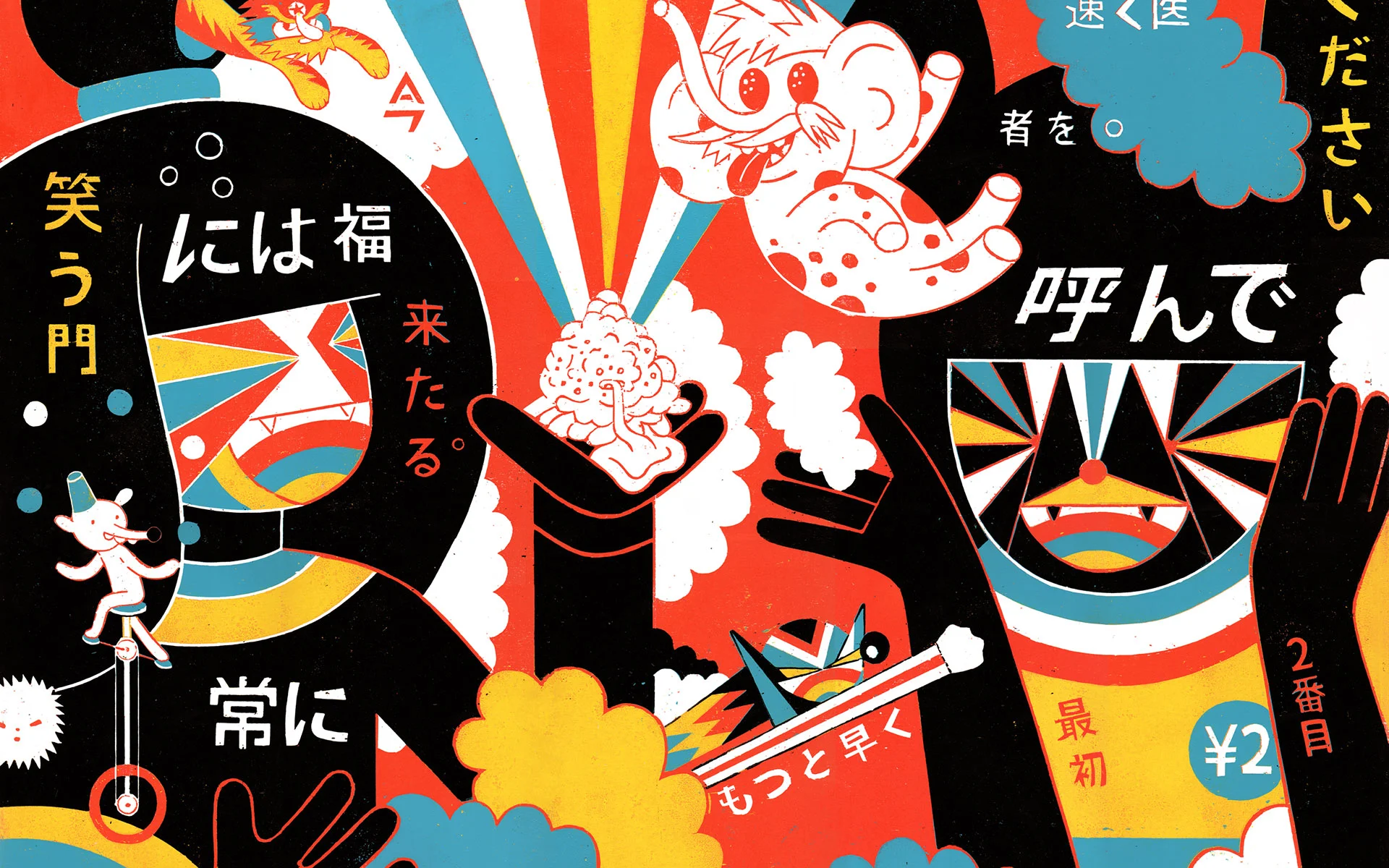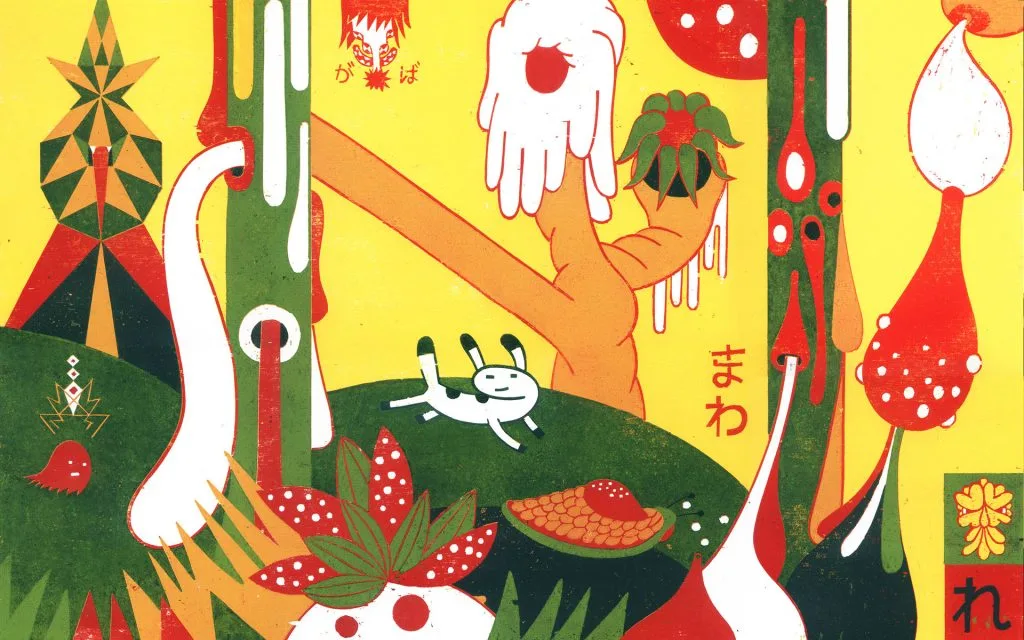

Before you lose yourself in the mesmerizing worlds of Roman Klonek, first take a good look at each shape and color and how these two intersect. Notice anything peculiar? What you’re currently looking at are not just regular illustrations, but woodcut prints. They’re carefully created with the rare and time-intensive pressing technique called the lost-cut.
The method of the lost-cut entails carving away thin layers from a single wooden plate. First, Roman makes the first shape, paints this section in one color and subsequently presses it onto paper. He then moves on to stripping away a new layer which then receives a fresh coat of paint. With each layer a different color and shape is added to the painting, resulting in a beautifully crafted series of prints.
Roman was introduced to woodcut printings during his study Graphic Arts in Dusseldorf, about 15 years ago. “I loved to work in this medium immediately, but with any good relationship, only in the course of time I understand more and more why,” Roman explains. “I simply love to handle wood; it feels good to touch, it’s an honest material and it has a non-elitist character.”
As opposed to digital work, which can endlessly be retouched and amended, Roman likes that woodcut printings have limits: “There are always little mistakes on the surface due to the grain and the unsteady color application. Every single print got its own combination of little faults; it is always an original.”
The hours that he spends carving requires a very focussed state of mind, almost meditational. “It’s like doing yoga,” he jokes.

Roman moved from Poland to Germany as a young boy, and this has always played an important role in his work. Living in a different country gave him a feeling of what he likes to call “familiar strangeness” – a sense of feeling at home and out of place at the same time.
“It’s a kind of spirit that makes you calm and relaxed. I love that moment when you feel it approaching… suddenly, not with a bang, but rather slowly. In this moment your mind starts to work and this leads to very nice things.”

This idea has led Roman to explore other cultures as well; he uses Russian and Japanese influences as a reference for his stories and characters. “A special moment was the discovery of Hayao Miyazaki. His stories are so vibrant, so full of strangeness – unpredictable and with a lot of mystery,” Roman says.
However, for Roman it is not important that his audience recognizes the (pop-)cultural references he adds to his work; he prefers to leave them “intentionally untold”. So, there is a narrative somewhere, but it might not be immediately obvious. Instead, just allow yourself to explore the wondrous worlds as Roman has created them: exotic and alien, but also strangely familiar.


